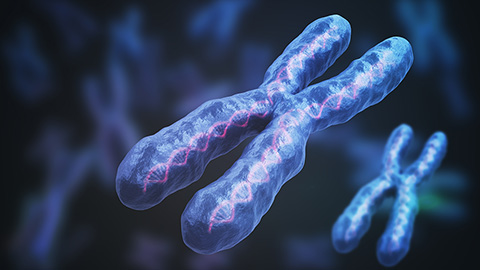A new way of looking at HDL in pregnancy
For a fetus to develop during pregnancy, many changes must occur in the mother’s body, including changes in lipoproteins. Lipoproteins have been well studied in pregnancy, but high-density lipoprotein, or HDL, tends to be overlooked. In a recent study published in the Journal of Lipid Research, however, researchers at the University of Cincinnati College of Medicine show how important HDL can be in understanding how metabolism changes to support fetal development.

Laura Woollett, John Melchior and their team started with a shift from looking at the fetus to studying lipoproteins in the mother. Earlier research from their department found big changes in HDL in Type 2 diabetes and obesity, so they thought HDL also might play a role in pregnancy. Many things that can go wrong, such as early birth and preeclampsia, a serious blood pressure condition, have an element of increased inflammation. Among its diverse functions, HDL is anti-oxidative and anti-inflammatory, so the team aims to identify women who have these adverse effects due to abnormal HDL.
“There are no biomarkers … and there are no treatments,” Woollett said, “so this is a very novel way that we could help identify who might be at risk early on and why.”
HDL particles are composed of lipids and proteins that act differently but look similar. Melchior compares viewing them to looking at a highway from an airplane. “You can see all these different cars and trucks on the road, and we know they have different functions,” he said. “But from that altitude they all look the same, so we use some fancy techniques to zoom in on these particles and get a better idea of which ones are traveling through the system.”
The team compared changes in lipoprotein subspecies in plasma collected from nonpregnant women and women in their second trimester. Using nuclear magnetic resonance spectroscopy, or NMR, they found that HDL particles were notably larger in pregnant women. Given that HDL is the most compositionally diverse of the lipoproteins, they went on to isolate the different HDLs using high-resolution gel filtration chromatography. Analyzing the phospholipid distribution in fractions of separated plasma, they found a considerable increase in large-sized HDL in pregnant women similar to that found using NMR. The researchers then used liquid chromatography–mass spectrometry to identify and analyze 87 HDL-associated proteins in the gel filtration fractions. Visualization of these data via a heat map showed remarkable changes in the abundance of several protein clusters, including one cluster containing pregnancy zone protein, in pregnant women compared to nonpregnant women.
These results show the impact of pregnancy on the size and protein composition of HDL particles and their distinct subspecies. Compositional alteration likely affects HDL function in multiple metabolic pathways. Woollett said, “The HDL, we think, is having an impact on various immune cells that are mediating inflammation as well as cells of the placenta or the maternal fetal interface, meaning that HDL could be affecting a lot of different cell types involved in the maintenance of pregnancy.”
The researchers think the proteins that tell HDL particles to perform their functions could serve as biomarkers. “For instance,” Melchior said, “if you see a really concerning rise or fall in a specific subspecies of HDL that we’ve defined, … that’s a great molecular marker for being able to trigger a more comprehensive examination of what’s going on. We can develop an assay to rapidly measure that and quickly determine if the mother is at risk for early labor and/or preeclampsia.”
Enjoy reading ASBMB Today?
Become a member to receive the print edition four times a year and the digital edition monthly.
Learn moreGet the latest from ASBMB Today
Enter your email address, and we’ll send you a weekly email with recent articles, interviews and more.
Latest in Science
Science highlights or most popular articles

Bacteriophage protein could make queso fresco safer
Researchers characterized the structure and function of PlyP100, a bacteriophage protein that shows promise as a food-safe antimicrobial for preventing Listeria monocytogenes growth in fresh cheeses.

Building the blueprint to block HIV
Wesley Sundquist will present his work on the HIV capsid and revolutionary drug, Lenacapavir, at the ASBMB Annual Meeting, March 7–10, in Maryland.

Gut microbes hijack cancer pathway in high-fat diets
Researchers at the Feinstein Institutes for Medical Research found that a high-fat diet increases ammonia-producing bacteria in the gut microbiome of mice, which in turn disrupts TGF-β signaling and promotes colorectal cancer.

Mapping fentanyl’s cellular footprint
Using a new imaging method, researchers at State University of New York at Buffalo traced fentanyl’s effects inside brain immune cells, revealing how the drug alters lipid droplets, pointing to new paths for addiction diagnostics.

Designing life’s building blocks with AI
Tanja Kortemme, a professor at the University of California, San Francisco, will discuss her research using computational biology to engineer proteins at the 2026 ASBMB Annual Meeting.

Cholesterol as a novel biomarker for Fragile X syndrome
Researchers in Quebec identified lower levels of a brain cholesterol metabolite, 24-hydroxycholesterol, in patients with fragile X syndrome, a finding that could provide a simple blood-based biomarker for understanding and managing the condition.

